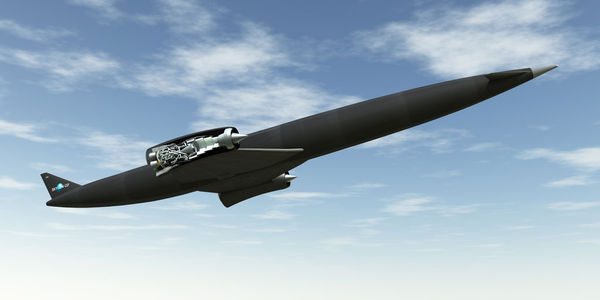The China Aerospace Science and Technology Corporation is beginning advanced research on a high tech, more efficient successor to the retired Space Shuttle, with hybrid combined cycle engines that can take off from an airport’s landing strip and fly straight into orbit. The hybrid space plane’s combined cycle engines would use turbofan or turbojet engines to takeoff horizontally from a landing strip. Once airborne, the engine then shifts to ramjet propulsion and, as speed increases, adjusts into a scramjet engine with supersonic airflow. At the scramjet stage, the hybrid spaceplane would enter hypersonic flight in ‘near space’, the part of the atmosphere between 20km to 100km above sea level. Finally, the hybrid spaceplane would use its rocket motors to push out of near space and into orbit.
Broadcasts by both state television broadcaster CCTV, and its English service, note that the CASTC spaceplane’s easy reusability would exponentially bring down space launch costs.
Combined Cycle Engine
The combined cycle engine shares the same inlet and exhaust nozzle for both the turbojet/turbofan and ramjet. In the upper diagram, the air intake ramps behind the ramjet spike direct airflow into the turbo core. In the bottom diagram, the air intake ramps gradually block off air flow to the turbo core, redirecting air into the ramjet combustion engine for high supersonic (Mach 3.0-Mach 4.0). Chinese combined cycle engines like this blueprint would be paired with a scramjet (presumably via changing the ramjet) and a separate rocket motor to create a hypersonic space plane.
Skylon
While the Skylon and the Chinese hypersonic space plane are both powered by combined cycle air breathing engines and rocket motors, the British Skylon uses pre-cooled jet engines built by Reaction Engines Limited to achieve hypersonic atmospheric flight, as opposed to scramjets. Both spacecraft will probably first fly around the mid 2020s.
Hybrid Propulsion
While this CCTV-13 clip of the hybrid spacecraft appears instead to show a conventional space rocket, China plans to have a combined cycle engine and rocket motor prototype ready for testing by 2021.
Other countries also pursue development of similar technologies. While scramjet engine planes are now widely associated with experimental American X-series projects, including Boeing X-51 and NASA’s X-43.
The race for future has begun.
Source and read more at: Popular Science
Best Regards
TBU NEWS



